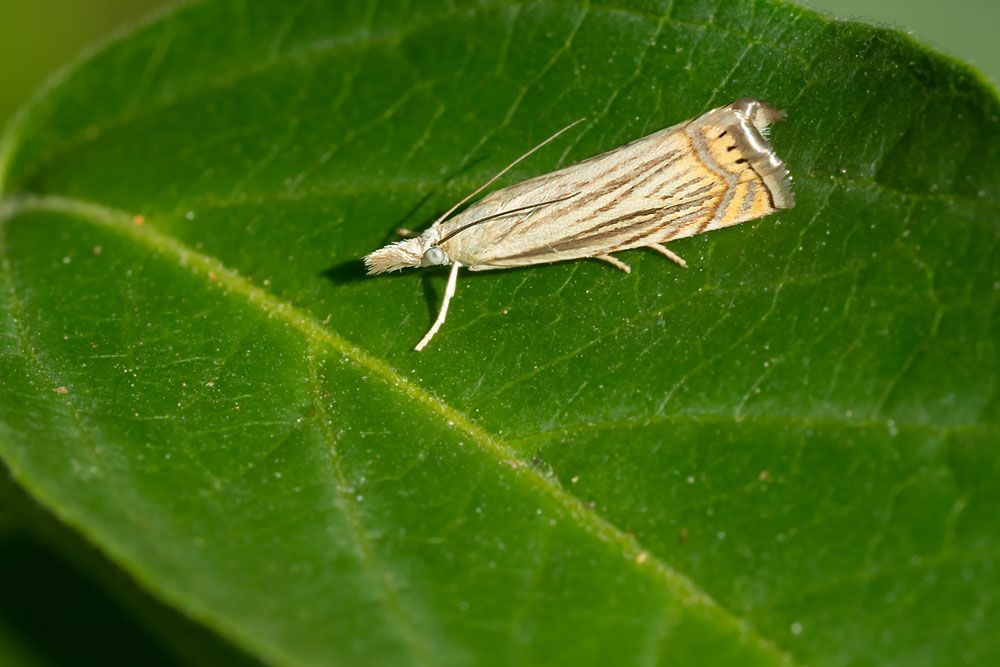
Cranberry girdler – Chrysoteuchia topiaria
Cranberry girdler – Chrysoteuchia topiaria
Common Name: Cranberry girdler
Latin Name: Chrysoteuchia topiaria
Appearance:
- Eggs are laid randomly in the leaf litter and are white at first, changing to an orangish-red tint as they hatch.
- The female may produce up to 700 eggs, with up to 300 laid on the first day. The eggs are oval and are 0.4-0.5 mm in length.
- The larvae are white with a brown head, and each body segment has several black hairs of varying sizes. They may grow up to 15.0 mm in length.
- The pupae are pale yellow and 10 mm long, and they live in a cocoon constructed of twigs, leaves, or other scraps discovered in the leaf litter and held together with silk lines.
- The adult’s body is silvery white, with pale straw forewings and silver bands.
